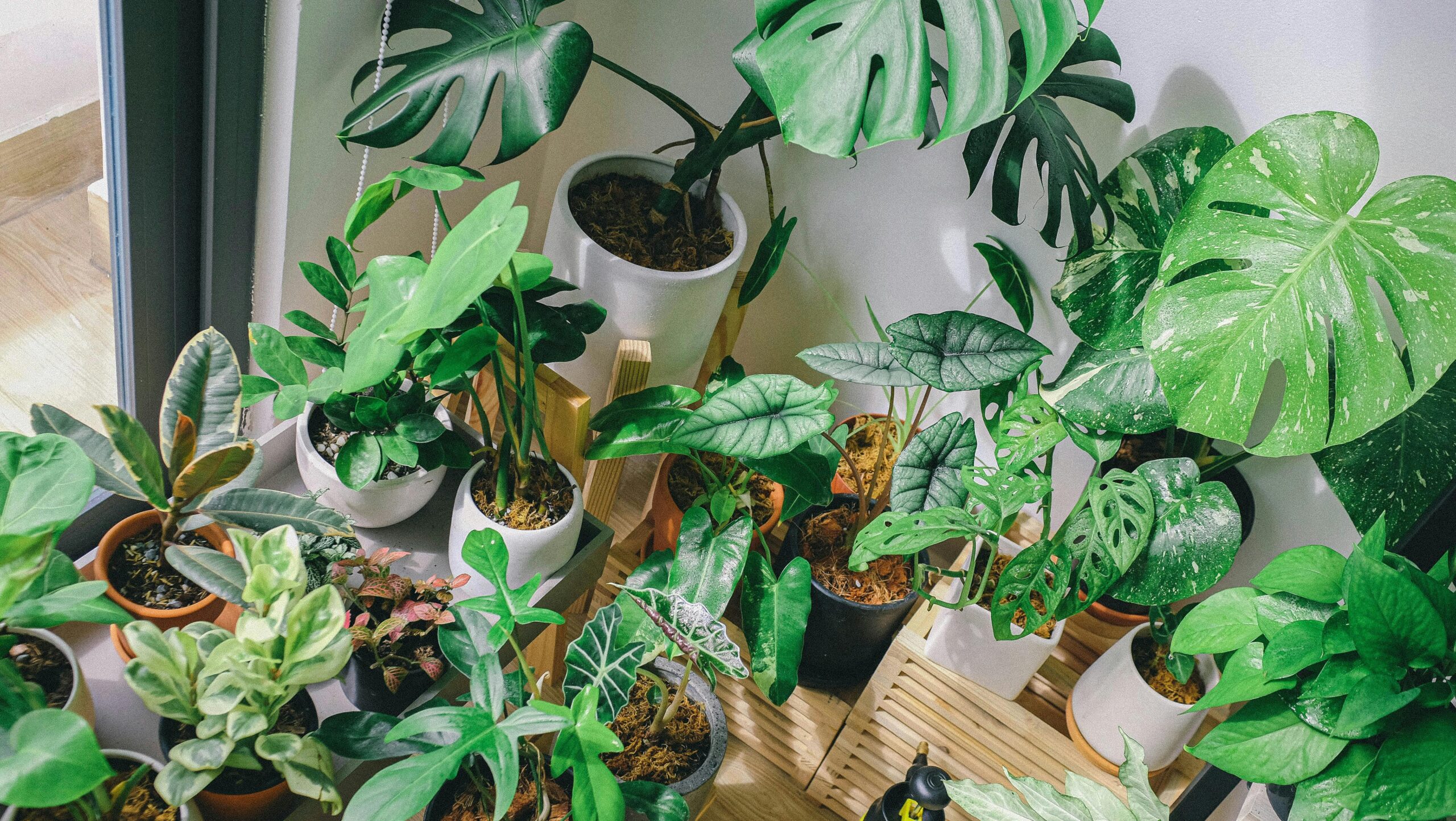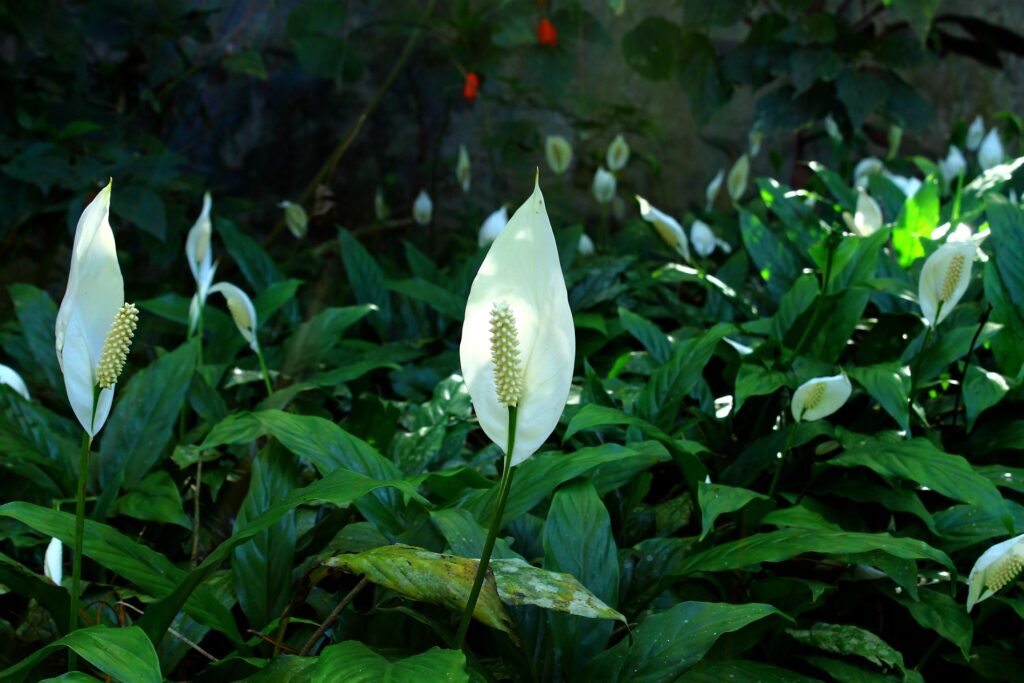Tropical Indoor plants bring both colorful leafy appearance and unique attractions that create interior environments rich with green mineral beauty. People who enjoy plants or who are new to care for houseplants will find tropical indoor plants rewarding and achievable when they provide proper care.

Table of Contents
Why Choose Tropical Indoor Plants?
- Year-Round Beauty: These plants provide intense colorful foliage which brings continuous home decoration throughout the entire year.
- Cleans the Air: Your indoor air quality improves due to the plants which filter out pollutants as they enhance atmospheric oxygen circulation in interior spaces. The result is better air quality.
- Ideal for Indoor Conditions: These plants succeed in household environments because warm temperatures along with indirect light characterize most residential spaces.
- Low-Maintenance: Tropical plants make low-maintenance choices which give powerful visual effects while requiring small amounts of care thus appealing to new plant owners and those with full schedules.
Light Requirements
- Bright, Indirect Light: The optimal light condition for these plants includes brightness with no direct rays. A window covered with sheer fabric produces suitable lighting conditions.
- Avoid Direct Sun: Sunlight that strikes leaves directly can create burns thus plants should be kept out of strong sun rays.
- Low-Light Tolerant: Snake Plants thrives best in environments having little sunlight.
- Regular Adjustments: The plants require additional light exposure together with regular rotation when their growth diminishes or leaves begin to fade.
Watering the Right Way
- Consistent Moisture: Tropical plants need consistent moisture. Wet your plants when the upper layer of soil has reached its dry state.
- Avoid Overwatering: An excessive supply of water can cause root rot. Check that moisture drains away properly from the pot.
- Humidity Helps: These plants love humidity. Apply mist to the leaves while using a home humidifier to combat dry air conditions.
- Check Soil: Check the soil by inserting your finger to a depth of one inch. If it lacks moisture you should provide water. You should check soil moisture only after a few days if it remains damp.
Ideal Temperature and Humidity
- Warm Temperatures: The best temperature environment for tropical plants exists within the range of 65°F to 75°F (18°C to 24°C).
- Avoid Cold Drafts: Exposure to cool drafts and heaters should be avoided because these plants enjoy stable and warm environments.
- Humidity Love: Plants of this type require humid conditions to prosper successfully. Set the humidity level between 50 and 60 percent through regular misting with a humidifier.
- Monitor Regularly: When air dryness reaches unacceptable levels the plants display signs of stress by developing brown leaf tips.

Soil and Fertilization
- Well-Draining Soil: These plants need well-draining soil. The combination of peat and perlite and pine bark proves effective for preventing waterlogging in plant soil.
- Fertilize Regularly: Give your plants a balanced water-soluble fertilizer about four times or six times during the growing period.
- Avoid Over-Fertilizing: Too much fertilizer can burn the roots and harm your plant. Stick to the recommended dosage, and avoid fertilizing during the plant’s dormant period (usually winter).
- Repot When Necessary: The plant needs repotting either when it fills its current container completely or when the soil turns too dense for growth.
Common Problems and How to Fix Them
- Yellowing Leaves: This can be a sign of overwatering or too much direct sunlight. Adjust watering habits and move the plant to indirect light.
- Brown Leaf Tips: Low humidity or dry air may cause this. Increase humidity with misting or a humidifier.
- Pests: Spider mites along with aphids often become pests that infest the tropical plants that grow inside a house. Use insecticidal soap to treat the plant or wipe its leaves with a slightly wet cloth.
- Wilting: Wilting may indicate underwatering. Responsive action should include both water check-ups of dry soils and occasional watering.
Styling with Indoor Tropical House Plants
- Focal Points: Tall tropical plants such as Bird of Paradise and Banana Palm will attract attention when placed in corners or entryways for defining focal points.
- Tabletop Plants: You can use Snake Plants together with Pothos plants since they are good for small tables and countertops and also for bookshelves to create a fresh atmosphere without dominating the space.
- Grouping Plants: Plants with matching light and humidity requirements should be organized together to achieve balanced esthetic unity.
- Modern Planters: Methods in plant arrangement include selecting trendy modern plant containers which match your interior design scheme to enhance your plants.
- Layering Heights: The arrangement of your indoor plants should include height variation through the combination of short and tall species in order to achieve depth in your space.
Seasonal Indoor Tropical Plant Care Tips
- Spring & Summer: Growing season—fertilize, repot, propagate.
- Fall: Reduce watering, clean leaves, inspect for pests.
- Winter: Pause fertilization, increase humidity, adjust for less sunlight.
Final Thoughts
The process of raising indoor tropical plants proves straightforward because knowledge about their environment enables home adaptation. The correct pairing of light, water, humidity together with proper care enables tropical foliage to flourish throughout the entire year inside your home.
FAQs:
1. What are the best tropical indoor plants for beginners?
New plant owners will find success with Peace Lily and Areca Palm along with Philodendron since these plants are easy to care for and adjust well to different environments.
2. How often should I water tropical plants indoor?
Wetting the soil corresponds to soil depth but follows a standard practice of watering once the top layer reaches 1–2 inches of dryness. Avoid overwatering.
3. Can the plants survive in low light?
Peace Lilies as well as particular Philodendrons can survive under low light exposure. These plants thrive best under conditions of bright daylight rays that pass through the window.
4. How do I maintain humidity for my plants?
To improve humidity you should activate a humidifier or mist the plant leaves while using a moisture-retaining tray below. Placing plants in groups works as a method to raise the surrounding humidity levels.
5. What kind of soil do these plants need?
They accept substrates that quickly drain water but keep part of the moisture in place. The combination of potting soil with coco coir and perlite makes an ideal mix for the majority of tropical plants.

